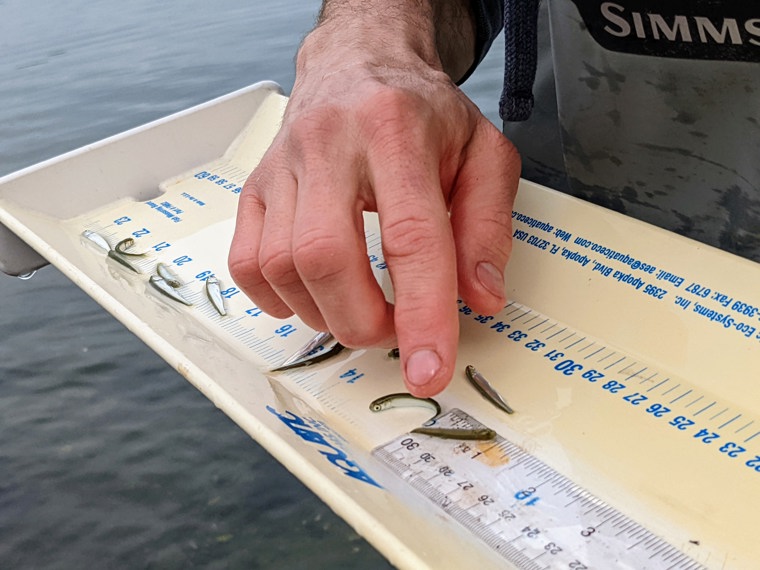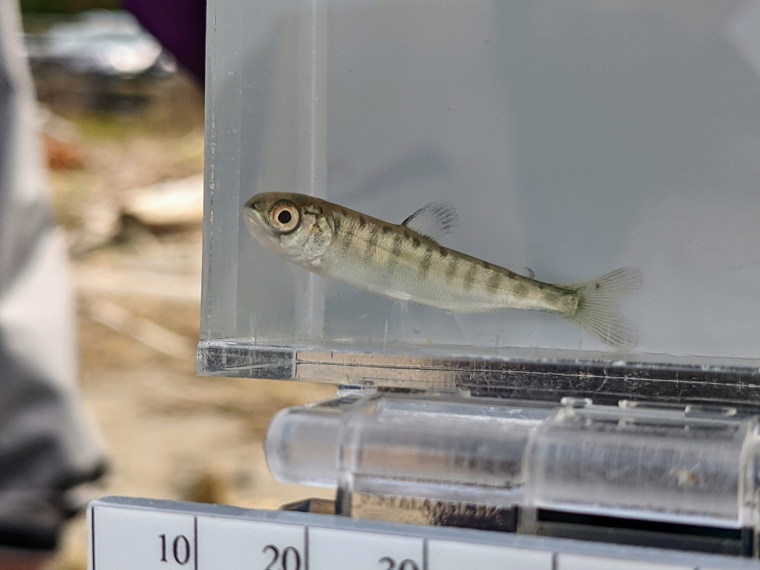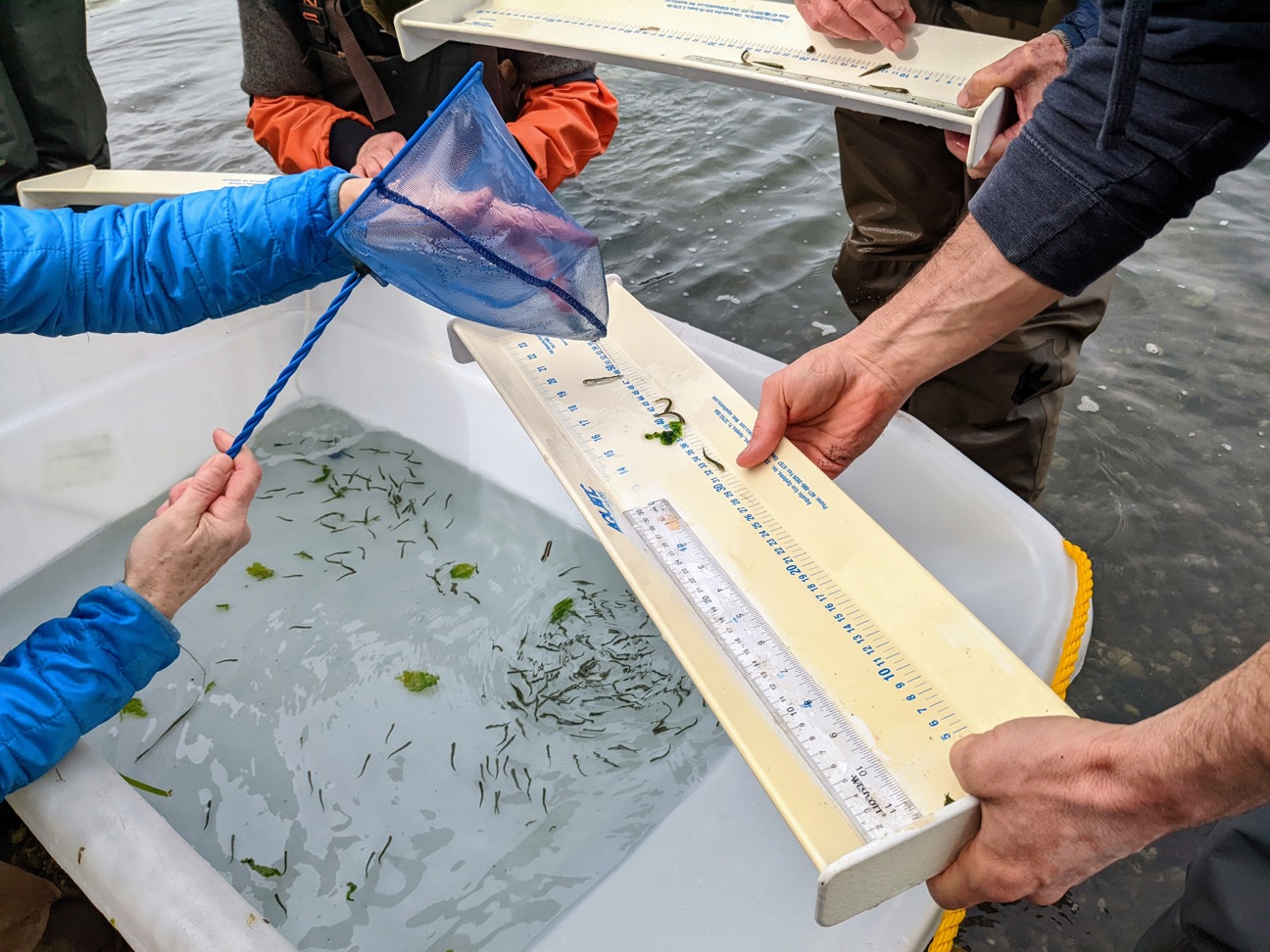Juvenile Salmon Survey
In partnership with WRIA 6 Lead Entity and Sound Water Stewards, we are participating in a multiyear study to learn how juvenile salmon use the pocket estuaries and adjacent shoreline areas of Whidbey and Camano islands.
This research is performed by a specialized team of volunteers trained by scientists of the National Oceanographic and Atmospheric Administration (NOAA). Volunteers use nets deployed from shore to seine juvenile salmon and other fish while also gathering data on water conditions. The team counts, identifies and measures each fish before releasing it back to the marine environment. They carry out this research in pocket estuaries and nearby shoreline areas of Island County in close collaboration with NOAA and the Skagit River Systems Cooperative (SRSC).
The all-volunteer team has performed with such dedication and professionalism that in 2008, NOAA named two of its members, Jim Somers and Bob Buck, as NOAA Environmental Heroes.

Counting & Measuring Fish

Juvenile Chum Salmon
The current focus of the seining team is at the restoration project at Cornet Bay. The team has been gathering data on juvenile fish use there for 4 years pre-restoration (2009-2012) and 4 years post-restoration (2013-2016). The report on the 8 years of seining is available below, as well as each yearly report:
